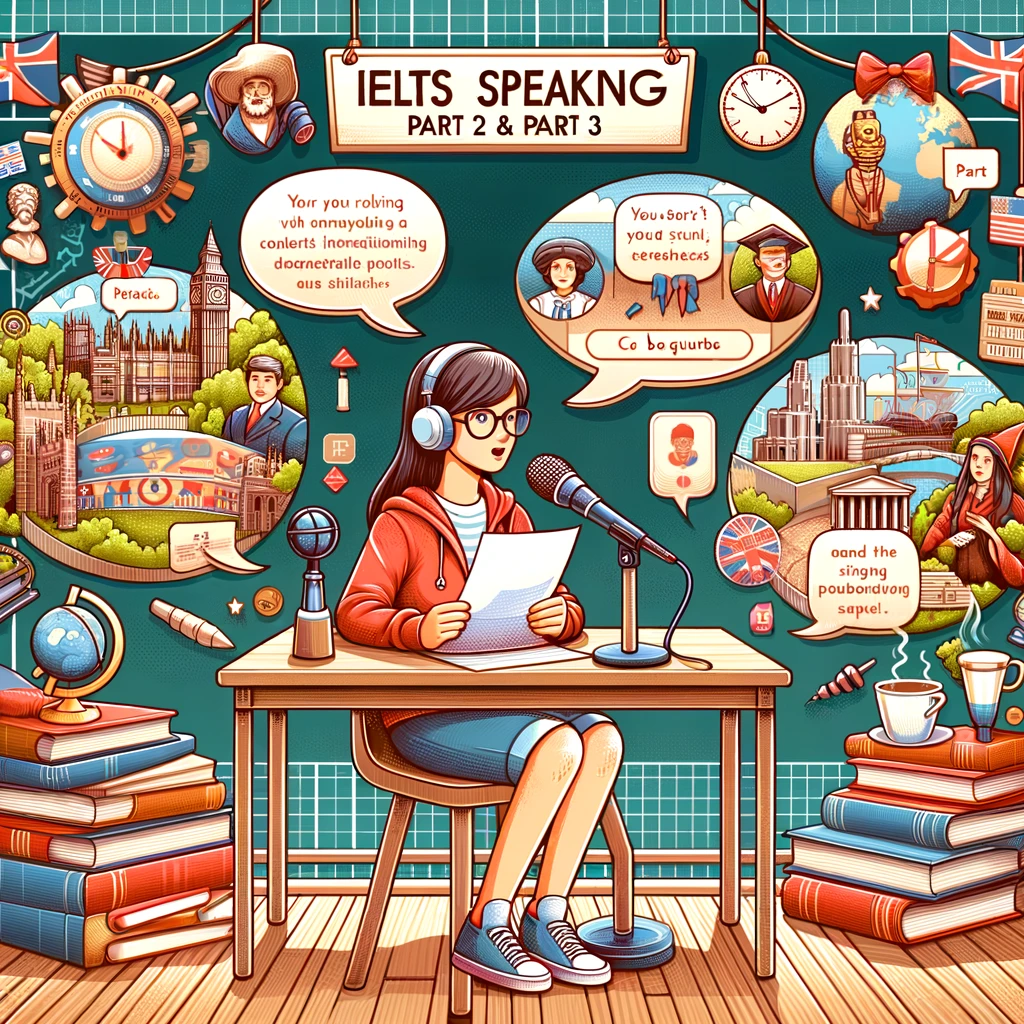Part 2
Describe a time when you learned something new.
One time when I learned something new was when I decided to learn Python programming. I was motivated to acquire this skill to enhance my teaching capabilities and stay current with technological advancements in education.
I learned Python through an online course on Udemy. The course was comprehensive, covering everything from basic syntax to advanced concepts like data analysis and web development. I dedicated a few hours each week to watch the instructional videos, complete the coding exercises, and participate in the course’s online forums to ask questions and interact with other learners. Additionally, I practiced regularly by working on small projects and applying what I learned to real-life scenarios.
I decided to learn Python because I recognized the growing importance of programming skills in various fields, including education. I wanted to incorporate technology into my teaching methods to create more engaging and interactive learning experiences for my students. Moreover, understanding programming languages can open up new opportunities for personal and professional development.
Learning Python has been immensely beneficial. It has allowed me to develop educational tools, automate repetitive tasks, and analyze data more efficiently. For instance, I created a program to track students’ progress and generate reports, which has streamlined my workflow and provided valuable insights into their performance. This skill has also increased my confidence in exploring and adopting new technologies.
I felt a great sense of accomplishment and satisfaction while learning Python. Initially, it was challenging to grasp some of the concepts, but persistence and practice paid off. The process of overcoming obstacles and gaining a new skill was incredibly rewarding. It reminded me of the importance of continuous learning and the limitless possibilities that come with acquiring new knowledge.
Part 3
1. Why is lifelong learning important?
Lifelong learning is important because it enables individuals to continuously adapt to changing circumstances and stay relevant in an ever-evolving world. It promotes personal growth, enhances employability, and fosters intellectual curiosity. Lifelong learning also contributes to mental well-being by keeping the mind active and engaged.
2. What are some effective ways to learn new skills?
Effective ways to learn new skills include taking online courses, attending workshops, and participating in hands-on training. Reading books, joining study groups, and seeking mentorship from experts in the field can also be beneficial. Practical application of new knowledge through projects and real-world experiences helps reinforce learning.
3. How can technology assist in learning?
Technology assists in learning by providing access to a vast array of resources and learning platforms. Online courses, educational apps, and virtual simulations make learning more interactive and accessible. Technology also facilitates communication and collaboration, allowing learners to connect with peers and instructors worldwide. Tools like AI and machine learning can personalize learning experiences to suit individual needs and preferences.
4. Do you think people learn better through practical experience or academic study? Why?
People often learn better through a combination of practical experience and academic study. Academic study provides foundational knowledge and theoretical understanding, while practical experience allows for the application of this knowledge in real-world scenarios. This combination helps reinforce learning and develop a deeper comprehension of the subject matter.
5. What motivates people to continue learning throughout their lives?
People are motivated to continue learning throughout their lives by a desire for personal and professional growth, curiosity, and the need to adapt to changing environments. Career advancement, intellectual fulfillment, and the pursuit of hobbies and interests also drive lifelong learning. Additionally, the social aspect of learning, such as networking and community involvement, can be a motivating factor.
6. How can employers support continuous learning for their employees?
Employers can support continuous learning for their employees by providing access to training programs, workshops, and online courses. Encouraging a culture of learning and development, offering tuition reimbursement, and allocating time for professional development are also effective strategies. Employers can create mentorship programs and promote knowledge sharing within the organization to foster continuous learning and skill enhancement.
Glossary for Band 9+ IELTS Speaking
1. Motivated to acquire – Driven to gain or obtain
2. Enhance my teaching capabilities – Improve my teaching skills
3. Technological advancements – Progress in technology
4. Comprehensive course – All-inclusive, thorough
5. Basic syntax – Fundamental rules of programming language
6. Advanced concepts – More complex ideas or theories
7. Data analysis – Examining data sets to draw conclusions
8. Web development – The work involved in developing a website
9. Instructional videos – Educational videos
10. Coding exercises – Programming practice tasks
11. Online forums – Internet-based discussion boards
12. Real-life scenarios – Practical situations
13. Growing importance – Increasing significance
14. Incorporate technology – Include or integrate technology
15. Engaging and interactive learning experiences – Interesting and participatory educational activities
16. Automate repetitive tasks – Use technology to perform routine tasks automatically
17. Analyze data – Examine information systematically
18. Streamlined my workflow – Made my work process more efficient
19. Valuable insights – Useful understanding or knowledge
20. Overcoming obstacles – Getting past challenges
21. Persistence and practice – Continuous effort and repeated exercise
22. Continuous learning – Ongoing education
23. Limitless possibilities – Endless opportunities
Part 3
Vocabulary and Phrases:
1. Why is lifelong learning important?
– Continuously adapt – Keep changing or adjusting
– Stay relevant – Remain important or useful
– Ever-evolving world – Constantly changing world
– Personal growth – Self-improvement
– Enhances employability – Makes one more likely to get a job
– Fosters intellectual curiosity – Encourages a desire to learn
– Contributes to mental well-being – Helps maintain mental health
– Keeps the mind active and engaged – Maintains mental alertness and interest
2. What are some effective ways to learn new skills?
– Online courses – Web-based classes
– Attending workshops – Going to training sessions
– Hands-on training – Practical instruction
– Reading books – Studying literature
– Joining study groups – Participating in collective learning sessions
– Seeking mentorship – Finding guidance from experienced individuals
– Practical application – Using knowledge in real situations
– Reinforce learning – Strengthen understanding
3. How can technology assist in learning?
– Vast array of resources – Wide range of materials
– Learning platforms – Online education sites
– Educational apps – Learning applications
– Virtual simulations – Computer-based scenarios
– Interactive and accessible – Engaging and easy to reach
– Facilitates communication and collaboration – Makes talking and working together easier
– Personalize learning experiences – Tailor education to individual needs
4. Do you think people learn better through practical experience or academic study? Why?
– Combination of practical experience and academic study – Both real-world practice and theoretical learning
– Foundational knowledge – Basic understanding
– Theoretical understanding – Knowledge of concepts and ideas
– Application in real-world scenarios – Using what is learned in everyday situations
– Reinforce learning – Strengthen understanding
– Deeper comprehension – Greater understanding
5. What motivates people to continue learning throughout their lives?
– Personal and professional growth – Self-improvement and career advancement
– Curiosity – Desire to learn
– Adapt to changing environments – Adjust to new situations
– Career advancement – Progress in one’s job
– Intellectual fulfillment – Satisfaction from learning
– Pursuit of hobbies and interests – Following personal passions
– Social aspect of learning – Community and networking benefits
6. How can employers support continuous learning for their employees?
– Training programs – Educational sessions
– Workshops – Training sessions
– Online courses – Web-based classes
– Culture of learning and development – Environment that encourages education
– Tuition reimbursement – Repayment for educational expenses
– Professional development – Career growth opportunities
– Mentorship programs – Guidance initiatives
– Knowledge sharing – Exchanging information within the organization


